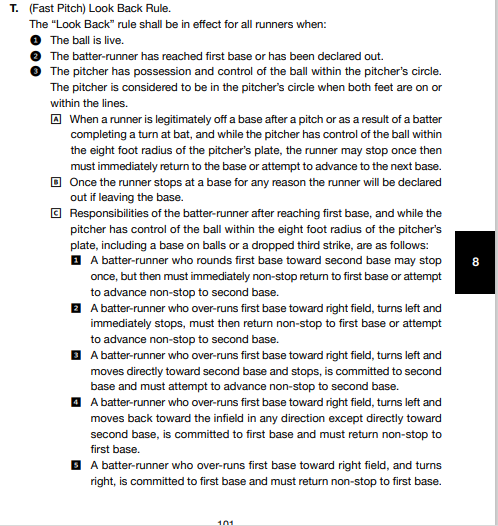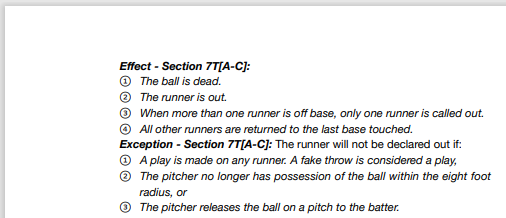- Jun 18, 2023
- 359
- 43
Ok. So that runner who rounded 2nd on the double can stand a few feet off the base while the ball is returned to the pitcher. So she either has to get back in contact with 2nd or make her way to 3rd and be in contact with the bag by the instant the next pitch is released. Correct?
Not trying to shoot this down, just trying to make sure I'm understanding correctly.
No, I'd say that if you haven't advanced, _and stop trying to advance_, then you can't advance. The pitcher has the ball, steps on the rubber (or whatever cue you want for "end" of the play) the runner has to return to second base. If they don't by the time the pitch is thrown, they're out for leaving early.
. If they just stand there off the base they are out under the lookback rule.
It's this judgement call that I'm trying to avoid. How long do they have? split second? 2 seconds? What purpose does this serve? If they accidentally take a step towards the next base they're basically out because they're forced to advance?
All in all, it just seems to create more issues than it solves. And all it seems to solve is preventing runners from taking a slight lead.








